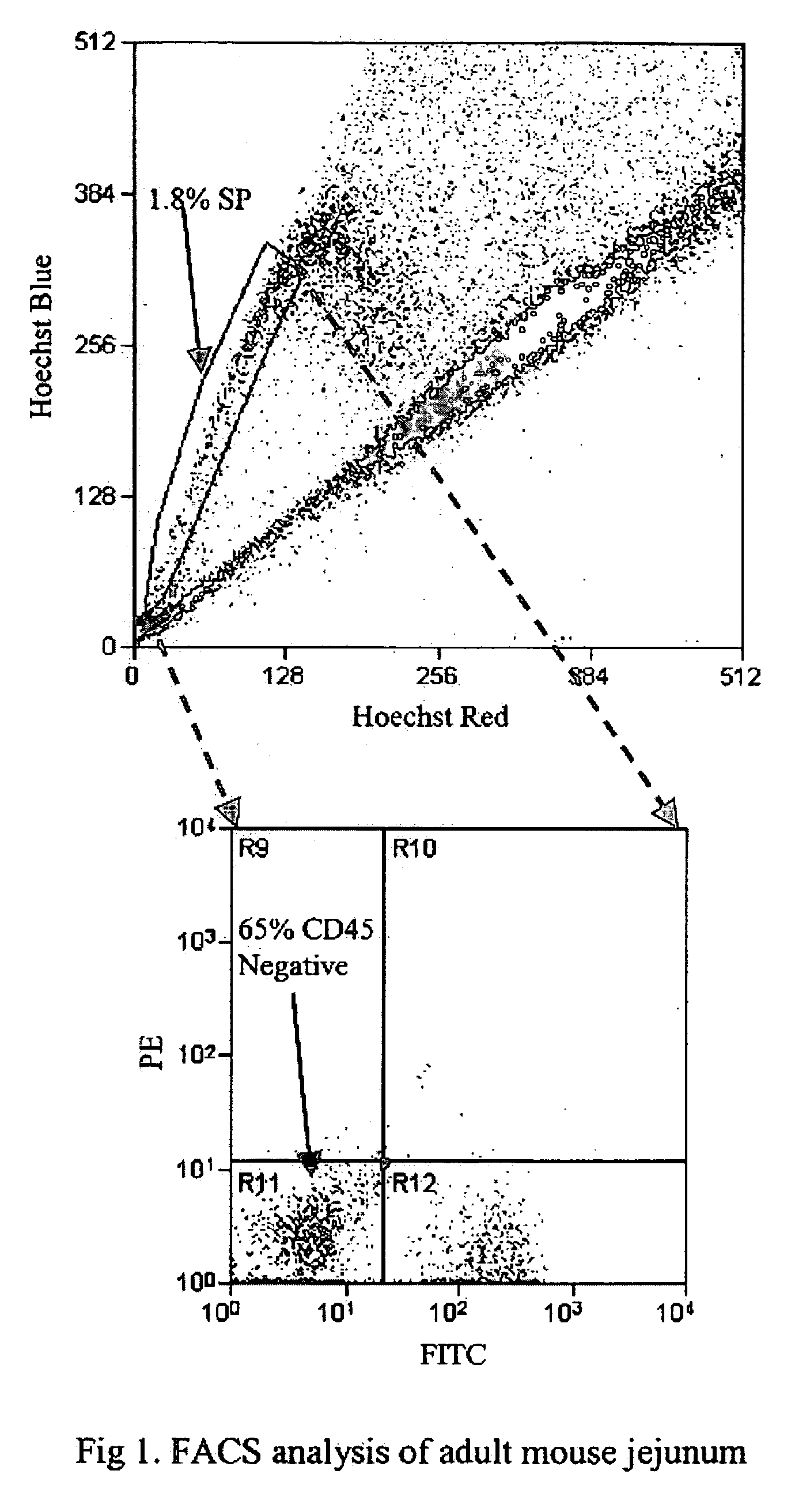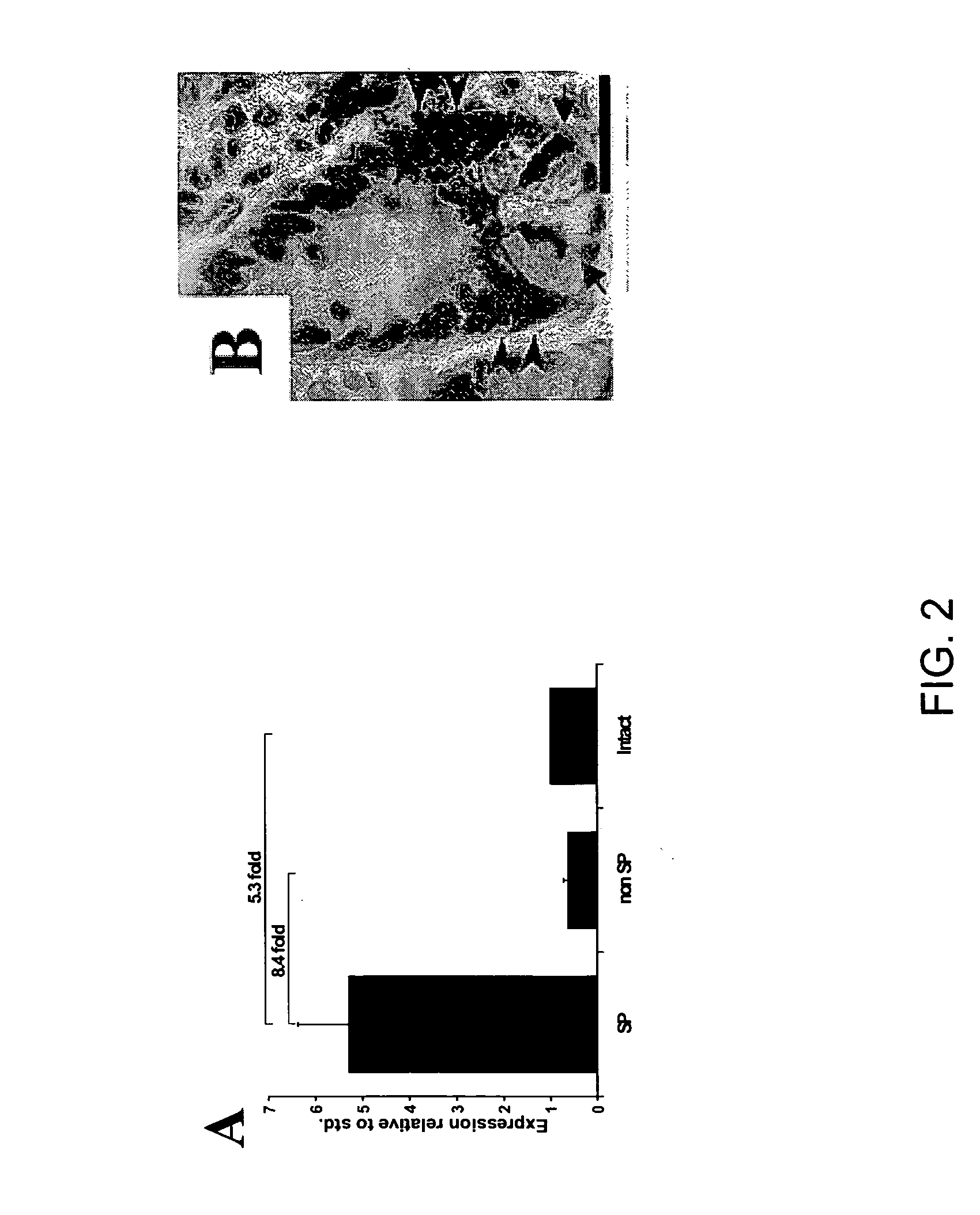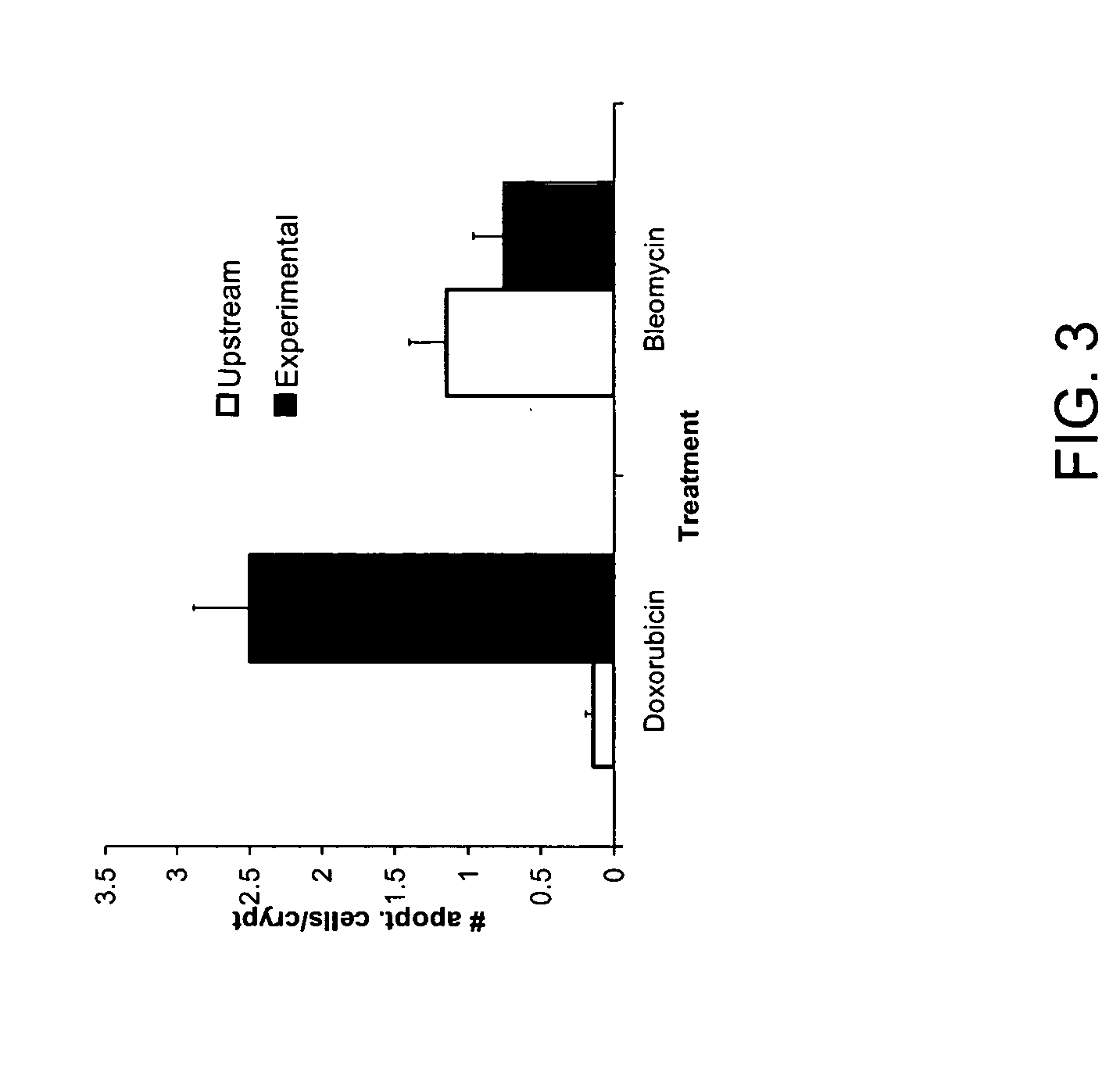Gastrointestinal stem cells and uses thereof
- Summary
- Abstract
- Description
- Claims
- Application Information
AI Technical Summary
Benefits of technology
Problems solved by technology
Method used
Image
Examples
example 1
Methods to Generate Single Cell Suspensions of Intestinal Tissue Suitable for Flow Cytometry
[0107] Although flow cytometry has been used for cell cycle analyses of the intestinal epithelium (Cheng and Bjerknes, 1985; Pallavicini et al., 1984), such studies typically use glutaraldehyde fixed cells (Cheng and Bjerknes, 1983). To date, there are no reports on the use of flow cytometry to separate viable cells from the epithelium (the exception being intraepithelial lymphocytes). Thus, in a specific embodiment of the invention, mucous-free single cell suspensions of mouse intestinal epithelium are produced, and the cells remain viable through the manipulations required for preparation, staining and sorting. In an additional specific aspect of the invention, staining with Hoechst 33342 yields a side population (SP), as in other tissues.
[0108] To pursue both these goals, adult mouse intestine was dissociated, such as by a modification of the method of Evans, et al. (1992) and then subje...
example 2
Methods to Generate Single Cell Suspensions of Colon and / or Stomach Tissue Suitable for Flow Cytometry
[0128] As with the small intestine, there is a method that yields a viable single cell preparation suitable for flow cytometry from the colon and / or stomach. Two studies were performed with mouse colon using the same digestion method as was used for the jejunum, yet significant clumping was generated, presumably due to mucus from the goblet cells that are more numerous in the epithelium of the colon than of the jejunum. Logical modifications to the method include use of a mucolytic agent such as dithiothreitol and / or N-acetyl-cysteine. In specific embodiments, modifications to the Evans et al. method (1992) are utilized, or a mannitol-based method described by Perret et al. for rat colon (1977) is utilized. Interestingly, this method requires no proteases and yet apparently gives epithelial cells that are totally free from the underlying stroma. The preparations have high viability...
example 3
General Methods for Sorting
[0129] Intestinal epithelial cells are suspended at 106 cells per ml in DME containing 2% fetal calf serum (FCS) and 5 μg / ml Hoechst 33342 (Sigma). After incubation at 37° C. for 90 min, they are spun down and resuspended in cold Hank's balanced salt solution containing 2% FCS. Staining with appropriate dilutions of FITC-labeled anti-CD3 and FITC-labeled anti-CD-45 (BD Pharmingen) is performed on ice for 10 min. After washing, cells will be resuspended in Hank's salt solution containing 2 μg / ml propidium iodide to exclude dead cells, and kept at 4° C. until sorting. A 350 nm argon-laser is used to excite Hoechst 33342 and propidium iodide. Analysis is performed on a triple-laser instrument (Cytomation, Fort Collins, USA) at 405 / 30 and 670 / 30 nm, as described for bone marrow (Goodell et al., 1996). The side population (SP) is identified and selected by gating on the characteristic emission fluorescence profile of SP cells. A second argon laser, tuned to 48...
PUM
| Property | Measurement | Unit |
|---|---|---|
| Composition | aaaaa | aaaaa |
| Mechanical properties | aaaaa | aaaaa |
| Disorder | aaaaa | aaaaa |
Abstract
Description
Claims
Application Information
 Login to View More
Login to View More - R&D
- Intellectual Property
- Life Sciences
- Materials
- Tech Scout
- Unparalleled Data Quality
- Higher Quality Content
- 60% Fewer Hallucinations
Browse by: Latest US Patents, China's latest patents, Technical Efficacy Thesaurus, Application Domain, Technology Topic, Popular Technical Reports.
© 2025 PatSnap. All rights reserved.Legal|Privacy policy|Modern Slavery Act Transparency Statement|Sitemap|About US| Contact US: help@patsnap.com



